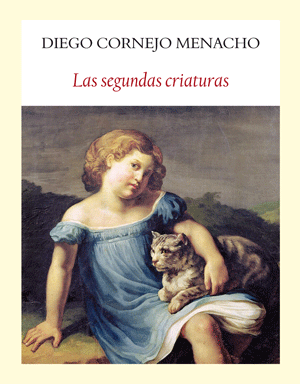El World Literature Today dedica este artículo a Las segundas criaturas, de Diego Cornejo Menacho
 What
is most striking about Diego Cornejo Menacho’s third novel is how his
proliferating imagination frees just about every known narrative
component into daring versions of what a novel can do. This is
particularly positive since he builds fiction from metafiction, avoiding
the typical traps of our abundantly solipsistic times. Cornejo’s
inspired idea is to write an apocryphal and blatantly partial biography
by defictionalizing “Marcelo Chiriboga,” purportedly an overlooked
Ecuadorian Boom writer who kept appearing, Zelig-like, in novels and
nonfiction by the real Boom writers José Donoso and Carlos Fuentes.
What
is most striking about Diego Cornejo Menacho’s third novel is how his
proliferating imagination frees just about every known narrative
component into daring versions of what a novel can do. This is
particularly positive since he builds fiction from metafiction, avoiding
the typical traps of our abundantly solipsistic times. Cornejo’s
inspired idea is to write an apocryphal and blatantly partial biography
by defictionalizing “Marcelo Chiriboga,” purportedly an overlooked
Ecuadorian Boom writer who kept appearing, Zelig-like, in novels and
nonfiction by the real Boom writers José Donoso and Carlos Fuentes.
Las segundas criaturas, one of
the best novels of its type of the last thirty years, is superior to
what Fuentes and Donoso could have done with their misfiring yarn. The
dominant point of view is a Catalan literary agent’s who, like Donoso’s
in The Garden Next Door, is modeled on the Boom matriarch
Carmen Balcells. Equally dominant is the refictionalized Jean Seberg,
reclaimed from Fuentes’s Diana: The Goddess Who Hunts Alone.
Cornejo’s version has her leave Fuentes for Chiriboga, unsettling the
connections between this novel and its Boom palimpsest. Fictional and
real characters and events appear at will, including other recent
writers and novels. Chiriboga is by now an ex-ambassador in Rome and
Paris, a Chevalier des Arts et des Lettres, a winner of the Cervantes
Prize and others that Fuentes received and Donoso wanted. Translated
widely, he lies dying.
That is the core narrative for a young
Ecuadorian from the provinces who becomes successful outside of his
small country, and from that premise Cornejo’s novel becomes more
complex and ambitious. Hilarious and clever, Las segundas criaturas
also reckons with the role of purportedly peripheral literatures in
Latin American literary history, marketing and personal charm in
canonicity, the intellectual follies of leftist commitment in the third
quarter of the twentieth century, literary influence and/or
appropriation, and ultimately the insecurity of novelists when faced
with challenges like success, or even mundane obligations. Cornejo
revisits those topics by showing Chiriboga’s great inability to
reconcile his ambiguity, disorderly and imperfect nature, and by making
his character’s origins opaque. This further complicates settling scores
because the literary social contract will not stand for righteousness
or reconciling inconsistencies.


Comentarios